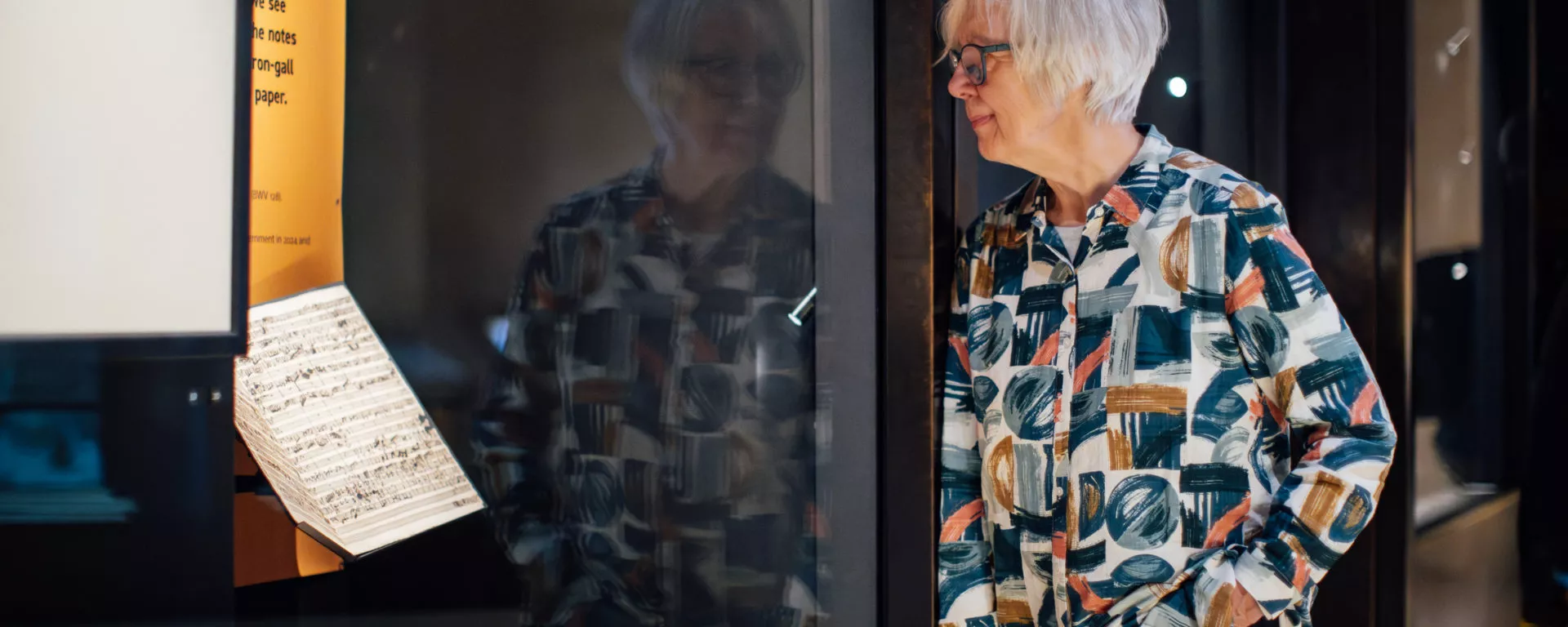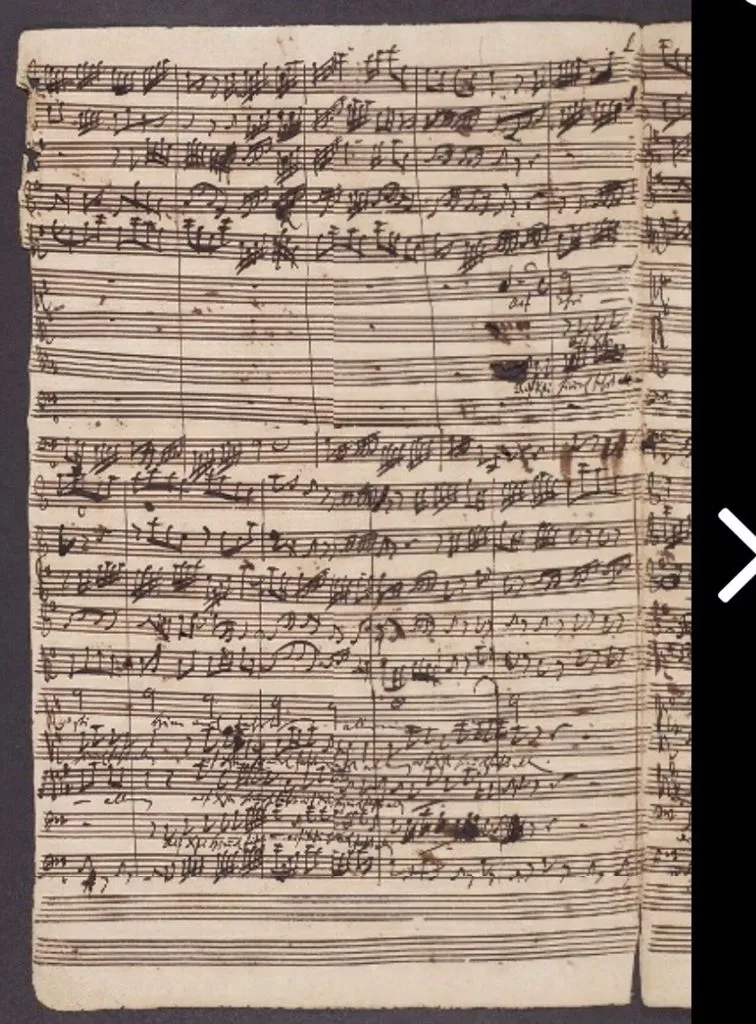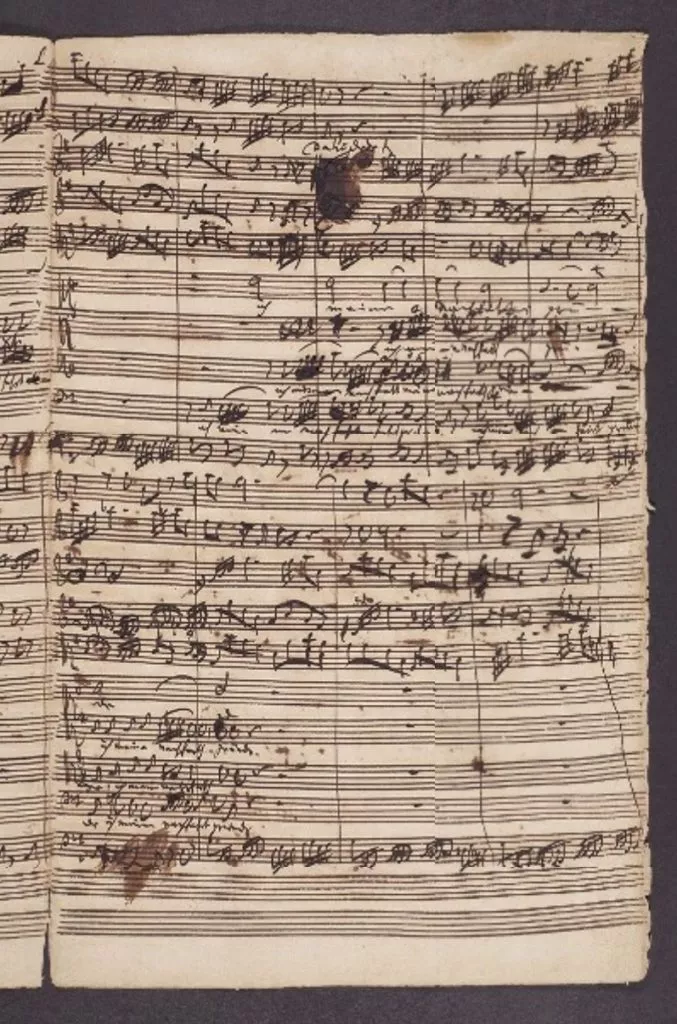
The Story of the Bach Manuscript

As preparations are underway for a special concert tomorrow night (Wednesday 7 May) celebrating the music of Johann Sebastian Bach, we take a moment to reflect on the remarkable journey of the manuscript that inspired Bach 1725. Newly acquired by the Bodleian Libraries in 2024, this treasured document, rich with historical significance, offers a rare glimpse into Bach’s creative process in the mid-1720s. In the article below, the Bodleian Libraries’ Alfred Brendel Curator of Music, Martin Holmes, explores the story behind the manuscript, tracing its path through the centuries to its new home in Oxford, and the steps taken to preserve it for future generations.
News that the Bodleian Libraries might acquire a Bach autograph first reached me in April 2023. Since only two other institutions in the country have Bach autograph manuscripts in their possession, the possibility of one coming to Oxford was immensely exciting. It was being offered in lieu of inheritance tax by the family of Sir Ralph and Lady Kohn and the application was being handled by Sotheby’s. I was immediately set to work on building a case for Oxford as the Government began the process of assessing the tax value of the manuscript and deciding to which institution it should be allocated. It was known that the Kohn family were keen for it to come to the Bodleian but that outcome was not a foregone conclusion. However, with the help of Dr Stephen Roe (formerly of Sotheby’s) and current Sotheby’s staff, the application was assembled and after a tense few months the final decision to allocate the manuscript to the Bodleian was made by the then Secretary of State and communicated to Bodley’s Librarian by Arts Council England. The manuscript was delivered to Oxford on 29 January 2024 and unpacked with much anticipation (and not a little trepidation) by Bodley’s Librarian and a small group of senior Special Collections staff.
Sir Ralph Kohn (1927–2016) had purchased the manuscript at a Sotheby’s sale in 1989, and it was considered to be the last major Bach manuscript in private hands. Sir Ralph was a distinguished biomedical scientist and pharmaceutical entrepreneur. He was also a keen musician and an accomplished amateur singer who, having been born in Leipzig, felt a natural affinity with J.S. Bach. A discerning collector, he built up a choice collection of musical manuscripts and first editions of works which meant a lot to him.
After Bach’s death in 1750, the manuscript scores of most of his works were inherited by his eldest son, Wilhelm Friedemann (1710–1784) who was living in Halle at the time. It is clear that W.F. Bach performed the work himself at some point, since some of his markings have been detected on the manuscript. He moved to Berlin in 1774 where he remained for the rest of his life and taught the harpsichord to Sarah Levy, Felix Mendelssohn’s great-aunt.
What happened to the manuscript next is not quite clear. W.F. Bach is known to have had financial troubles and sold off some of his father’s manuscripts. However, in 1827, it was acquired, along with manuscripts of a dozen more cantatas from W.F. Bach’s estate, by Carl Pistor (1778–1847), a civil servant with an obsession for precision optical instruments, which he manufactured in conjunction with one of Felix Mendelssohn’s uncles. He was also a passionate music lover and gave the young Felix the task of sorting his collection. Pistor’s daughter Betty sang with Mendelssohn in the Berlin Singakademie and she was the object of his teenage affections for a while until a rift developed between the two families. Betty Pistor eventually married Adolf A.F. Rudorff (1803–1873) and the manuscript remained in their possession until around 1854 when it was given to the conductor and composer Robert Radecke (1830–1911). From him, it passed to his grandson, Ewald Radecke (1907–1979) and it remained in the Radecke family until coming to auction at Sotheby’s in 1989.
The manuscript comprises sixteen pages in four unbound bifolia. In common with most of Bach’s manuscripts, it was written on paper with corrosive iron-gall ink which presents modern conservators with a considerable challenge if these documents are to survive for future generations to study and enjoy. A particular problem with music notation is that the forming of note heads causes high concentration of ink in small areas which often causes brown discoloration beside the ink and through the paper. In acute cases, the ink can literally burn through the paper, creating cracks and losses where notes should be and severely weakening the structure of the paper. Given the corrosive nature of the ink Bach used, it is difficult to arrest this process completely.
Over the years, Bach manuscripts have been subjected to a variety of treatments, from splitting each page in two and inserting an acid-free barrier between them, to washing the paper with alkaline solutions. The Bodleian’s approach in this case is to avoid interventive measures and provide effective mitigation solutions. The priority will be to ensure that the manuscript can be securely housed and handled without risk of further damage. The bifolia, protected in custom made archival folders and box, will be stored in controlled environmental conditions. Handling will be kept to an absolute minimum. No further treatment is planned at this stage.



As soon as it arrived in Oxford, the manuscript was photographed by the Bodleian’s studio and high-quality digital images are now freely available in Digital Bodleian. Scans can never be a complete substitute for an original manuscript but the images will enable scholars and others with an interest in Bach to study many aspects of the music and the process of its composition without having to handle the original. In due course, modern multi-spectral imaging techniques could be used to reveal more about aspects of the manuscript which are less obvious to the naked eye, such as different layers of annotations on the score.
The cantata was first edited for publication by A. Dörffel in 1878, for the Bach-Gesellschaft edition, and the manuscript was presumably borrowed for that purpose. Indeed, discrete markings can be found in the manuscript which were added at that time. In 1960, it was re-edited by Alfred Dürr for the Neue Bach-Ausgabe, taking account of a surviving set of performing parts in Berlin. It is therefore unlikely that renewed study of the Kohn manuscript will cause radical changes to be made to the accepted musical text of the work. However, the manuscript will enable successive generations of scholars and students to see how Bach committed his thoughts to paper and feel the presence of one of the greatest musical geniuses of all time.
Martin Holmes is the Alfred Brendel Curator of Music, Bodleian Libraries. He studied Music at Worcester College, Oxford and first joined the Bodleian’s Music Section nearly forty years ago. After several cataloguing projects in Music and Rare Books, including the Tenbury and Harding collections and the library of John Locke, he spent a period as Head of Catalogue Support Services before returning to head up the Music Section on the retirement of Peter Ward Jones in 2009. He has a particular interest in English music and has written on various subjects, including the composer Ernest Farrar, the development of the Bodleian’s legal deposit music collections and the provincial book trade.
The manuscript is currently on display until 17 August 2025 as part of Bach: A Composer’s Obsession, a free display in Blackwell Hall, Weston Library. The manuscript is shown alongside a selection of items which illustrate the importance of Bach in the life and work of a later composer, Felix Mendelssohn.
Bach 1725, with a manuscript viewing and pre-concert talk, will take place at the Sheldonian Theatre on Wednesday 7 May.
